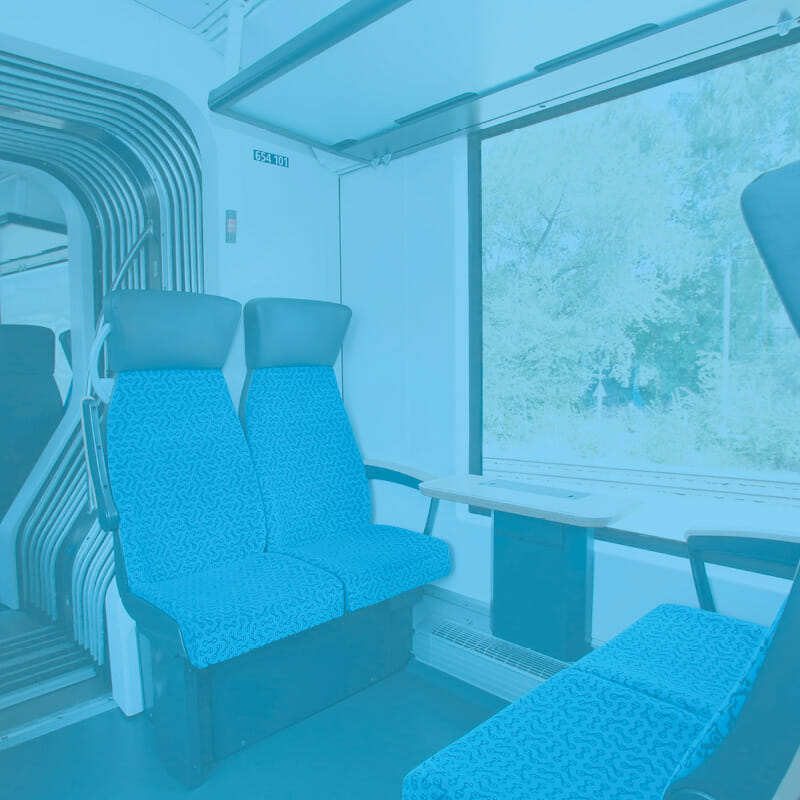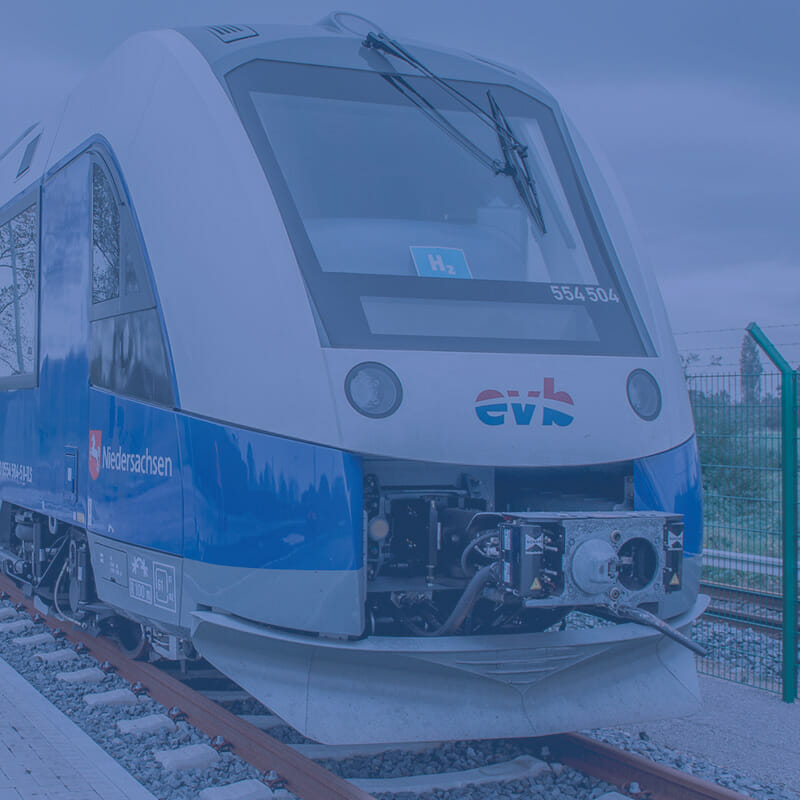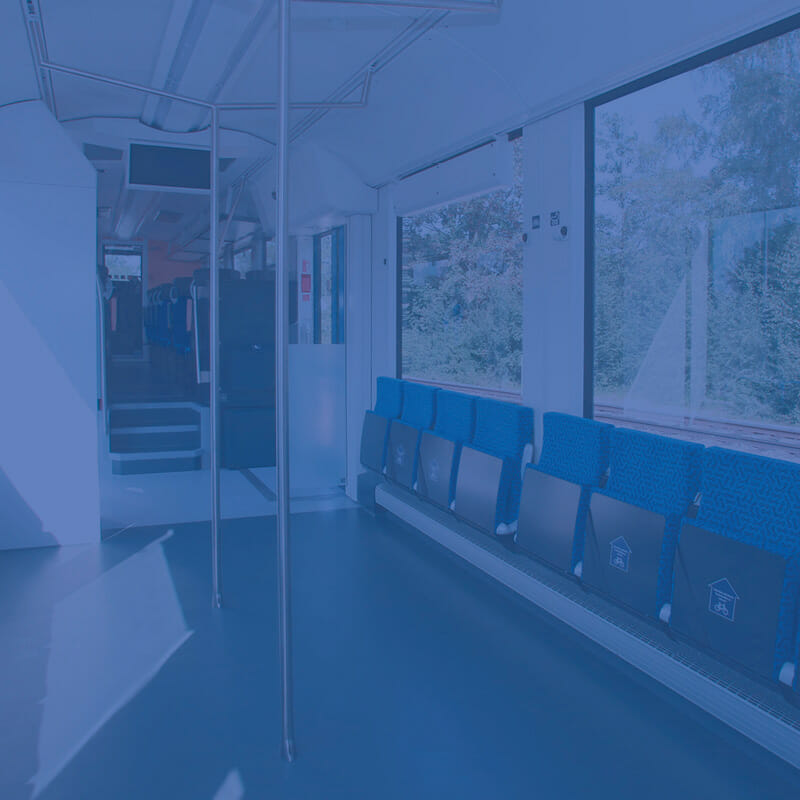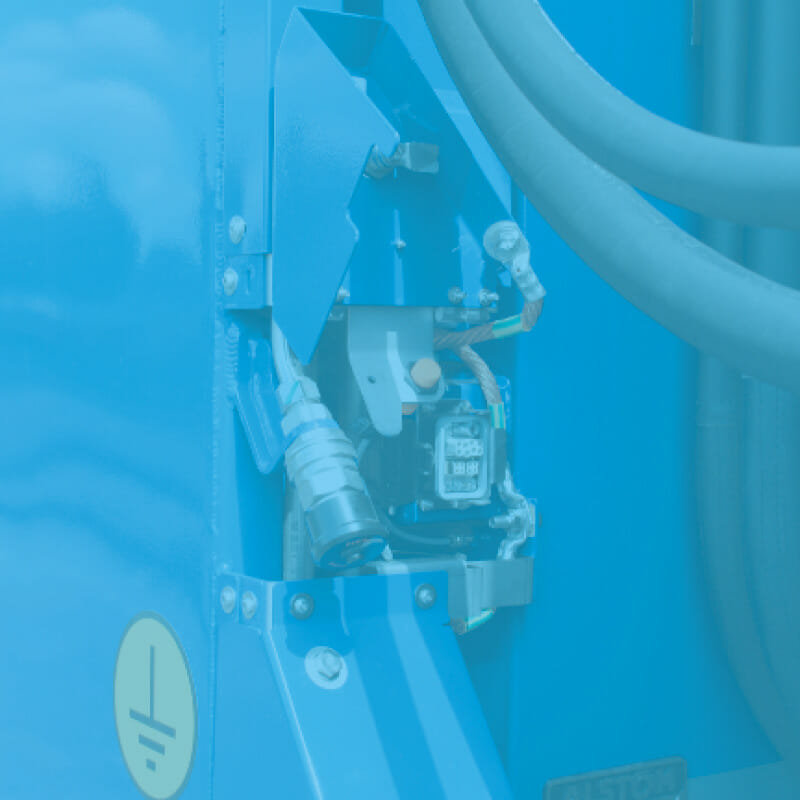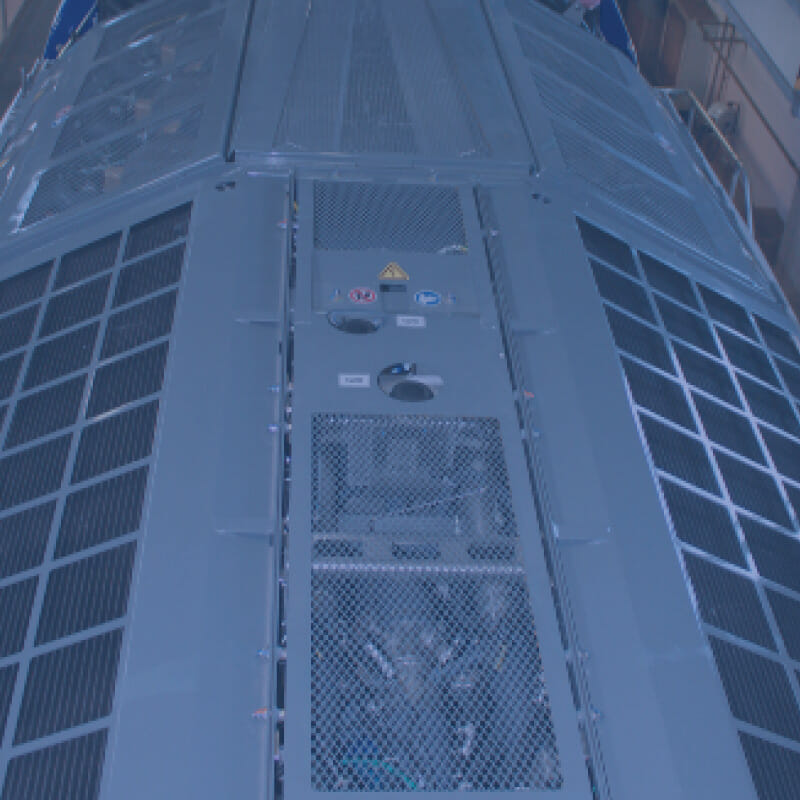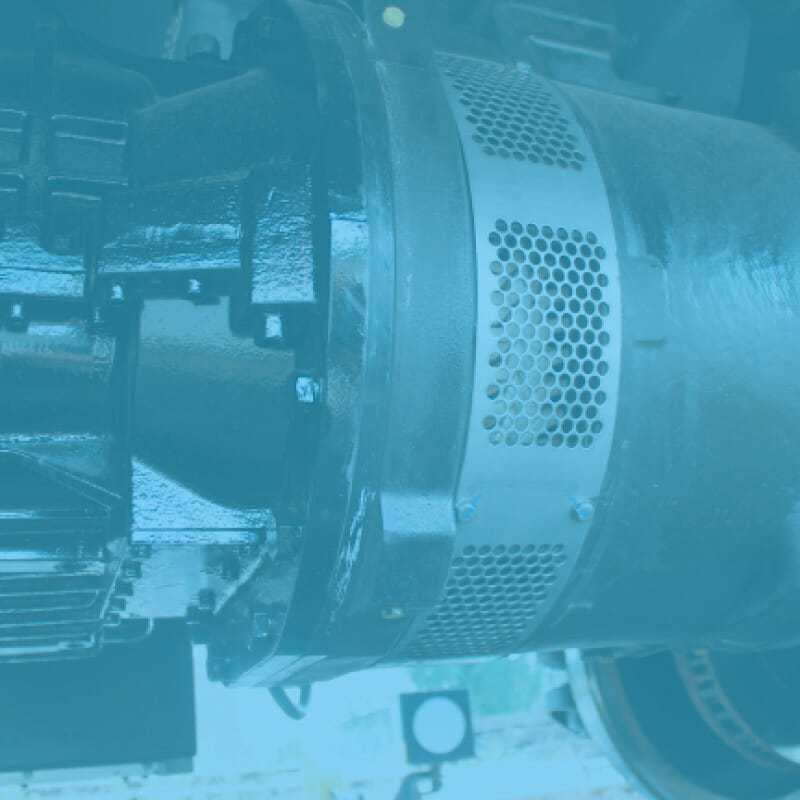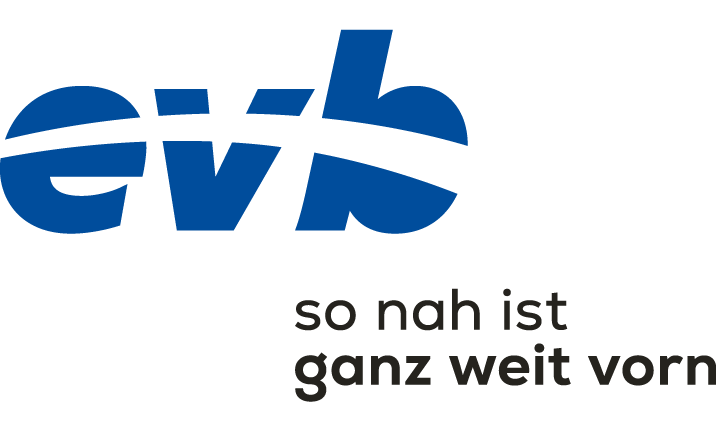H2ISTORY
in Lower Saxony
The world’s first hydrogen-powered train in scheduled service.
Silent. Clean. Climate-friendly: In summer 2022, the world’s first permanent hydrogen train service launched in Lower Saxony / Germany – operated by evb on its own rail network. Step by step, we are replacing all diesel units with the hydrogen fuel cell train Coradia iLint. And everyone can be part of it! All for the price of a regular railway ticket.
Most of the trains operated by evb between Buxtehude – Bremervörde – Bremerhaven and Cuxhaven are already hydrogen trains. Occasionally, LINT41 diesel trains still support passenger services on the RB33. You can find the timetable for the RB33 on the evb website (www.evb-elbe-weser.de).
So close is
way ahead.
H2ISTORY
in Lower Saxony
The world’s first hydrogen-powered train in scheduled service.
Silent. Clean. Climate-friendly: In summer 2022, the world’s first permanent hydrogen train service launches in Lower Saxony / Germany – operated by evb on its own rail network. Step by step, we are replacing all diesel units with the hydrogen fuel cell train Coradia iLint. And everyone can be part of it! All for the price of a regular railway ticket.
+++ World record with evb hydrogen train: On 15 September 2022, a team by manufacturer Alstom drove one of the hydrogen trains owned by LNVG and operated by evb to a world record: 1175 kilometres with a single hydrogen tank filling. Congratulations! +++
So close is
way ahead.

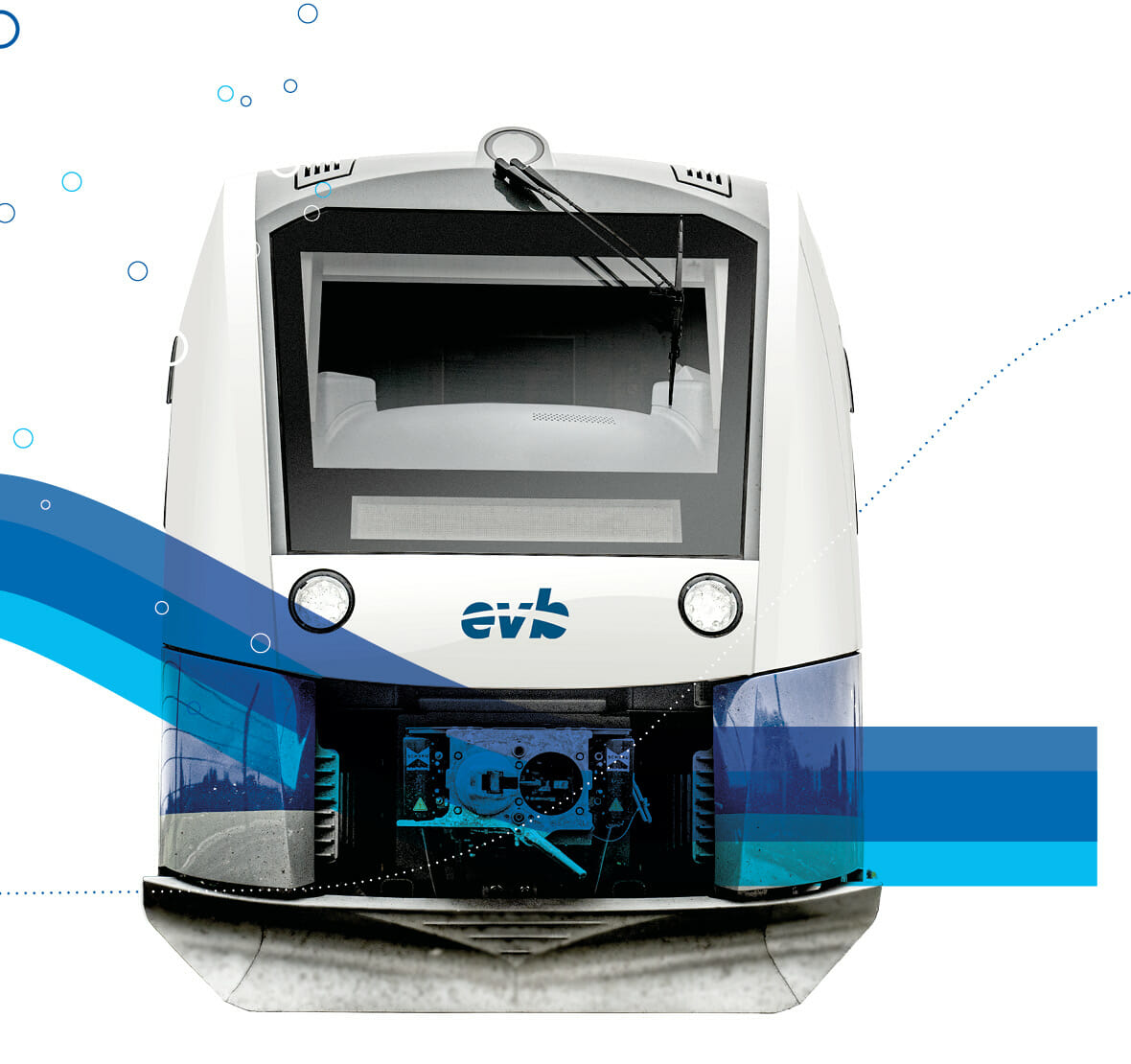
Travel the Elbe-Weser Triangle
by Hydrogen Train
All new – and yet familiar:
From the outside, the hydrogen train Coradia iLint resembles the ALSTOM Lint 41 railcars passengers of evb regional rail already know.
But from a technical perspective, there is a lot that is new: Whisper quiet propulsion by electric motor. Exhaust-free travel powered by fuel cells. More seats and increased comfort for passengers: sockets for charging notebooks and mobile phones as well as large displays for up-to-date passenger information are all standard in the Coradia iLint.

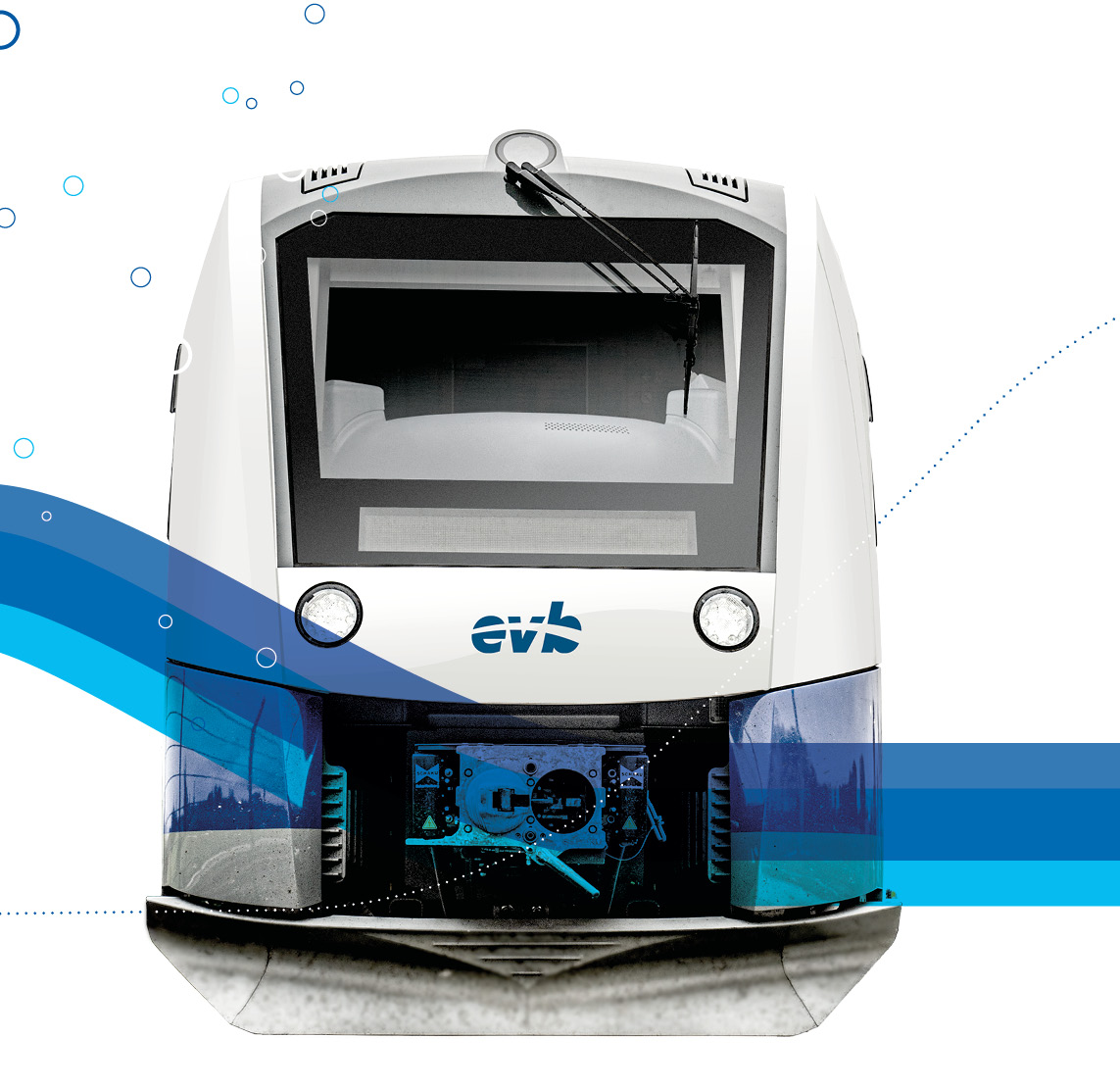
Travel the Elbe-Weser Triangle
by Hydrogen Train.
All new – and yet familiar:
From the outside, the hydrogen train Coradia iLint resembles the ALSTOM Lint 41 railcars passengers of evb regional rail already know.
But from a technical perspective, there is a lot that is new: Whisper quiet propulsion by electric motor. Exhaust-free travel powered by fuel cells. More seats and increased comfort for passengers: sockets for charging notebooks and mobile phones as well as large displays for up-to-date passenger information are all standard in the Coradia iLint.
Facts + figures about the hydrogen train Coradia iLint
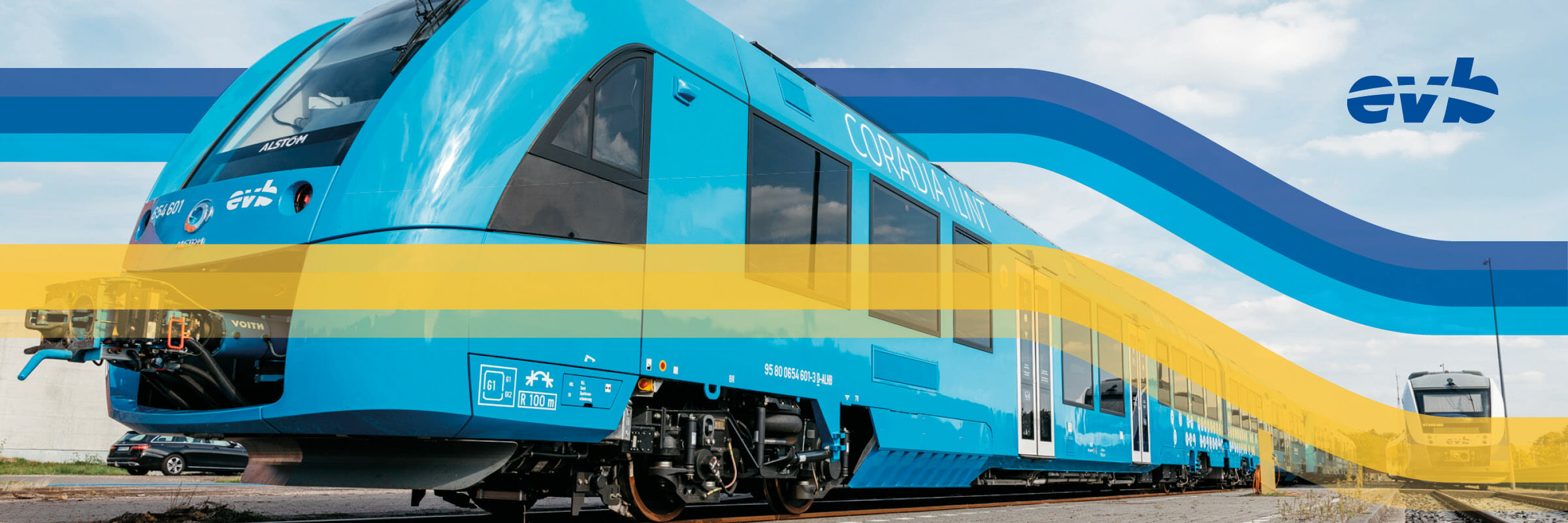
Power Station
on Wheels.
The hydrogen train Coradia iLint does not need an overhead line: It generates its own electricity from clean hydrogen. As a result, the iLint does not only run as quiet as a whisper, but is also 100 per cent emission-free – and climate-friendly to the max. Instead of exhaust gases, the Coradia iLint emits only vapour and a little condensation water. (Image: BR654 prototype in blue finish).
By the way:
The hydrogen train is “high-tech from the region”. Built in Salzgitter/Lower Saxony, developed in Salzgitter and Tarbes/France, ordered and acquired by the Landesnahverkehrsgesellschaft Niedersachsen mbH LNVG, maintained and operated in Northern Germany’s Elbe-Weser triangle by evb, based in Bremervörde.
How the hydrogen train works

Fuel Cell
A fuel cell on the train roof generates electricity from hydrogen and oxygen.
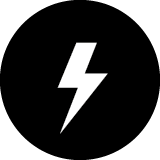
Battery
A battery stores the electricity generated by the fuel cell as well as through recuperation of kinetic energy during braking. An intelligent energy management system ensures that the electricity on board is used efficiently and economically at all times, making sure that there is always ample energy for acceleration, heating, onboard hygiene (WC) and comfort.

Kraftwerk
auf Rädern.
The hydrogen train Coradia iLint does not need an overhead line: It generates its own electricity from clean hydrogen. As a result, the iLint does not only run as quiet as a whisper, but is also 100 per cent emission-free – and climate-friendly to the max. Instead of exhaust gases, the Coradia iLint emits only vapour and a little condensation water. (Image: BR654 prototype in blue finish.)
Übrigens: Der Wasserstoffzug ist „Hightech von hier“. Gebaut in Salzgitter, entwickelt in Salzgitter und Tarbes/Frankreich, bestellt und erworben durch die Landesnahverkehrsgesellschaft Niedersachsen mbH (LNVG), gewartet und eingesetzt im Elbe-Weser-Dreieck von der evb mit Sitz in Bremervörde.
How the hydrogen train works:

Fuel Cell
A fuel cell on the train roof generates electricity from hydrogen and oxygen.

Battery
A battery stores the electricity generated by the fuel cell as well as through recuperation of kinetic energy during braking. An intelligent energy management system ensures that the electricity on board is used efficiently and economically at all times, making sure that there is always ample energy for acceleration, heating, onboard hygiene (WC) and comfort.
Frequently Asked
Questions
In this section, we have compiled frequently asked questions and answers about the hydrogen train Coradia iLint operated by evb regional rail on its own rail network.
Frequently Asked
Questions
In this section, we have compiled frequently asked questions and answers about the hydrogen train Coradia iLint operated by evb regional rail on its own rail network.
Virtual Tour
Discover the New iLint
Experience the hydrogen train Coradia iLint from a passenger’s perspective: Our virtual tour makes it possible. Take a look!
For the full hydrogen train experience, a train ticket is all you need. Enjoy a whisper-quiet and climate-friendly train ride through the Elbe-Weser triangle!
So close is way ahead.
Press
Here we provide you with pictures and background information about the hydrogen train on the evb network.
You may use the texts, pictures and videos provided here free of charge for the purpose of providing information about the hydrogen train (also on social media). When doing so, please state the full photographer or video credit.
Press release about the hydrogen train world premiere (DE)
Press release about the hydrogen train world premiere (EN)
Picture gallery: Hydrogen train in Bremervörde
Download:LoRes (.zip, 26 MB) | MedRes (.zip, 32 MB) | HiRes (.zip, 229 MB)
(Foto-Credit: evb / Sabrina Adeline Nagel)
Picture gallery: World premiere hydrogen train in Bremervörde (August 24, 2022)
Download: MedRes (.zip, 24 MB)
Dropbox-Link: hier klicken zum Ansehen und Herunterladen | WeTransfer-Link: hier klicken
(Foto-Credit: evb / Sabrina Adeline Nagel)
Video: Hydrogen train in Bremervörde
Full HD (252,1 MB) | 4K on request
(Video-Credit: evb)
Contact for Media and Press
Andrea Stein (evb)
+49 4761 9931-452 | andrea.stein@evb-elbe-weser.de
Dirk Altwig (LNVG)
+49 511 53333-180 | altwig@lnvg.de
Press
Here we provide you with pictures and background information about the hydrogen train on the evb network.
You may use the texts, pictures and videos provided here free of charge for the purpose of providing information about the hydrogen train (also on social media). When doing so, please state the full photographer or video credit.
Press release about the hydrogen train world premiere (DE)
Press release about the hydrogen train world premiere (EN)
Picture gallery: Hydrogen train in Bremervörde
Download:LoRes (.zip, 26 MB) | MedRes (.zip, 32 MB) | HiRes (.zip, 229 MB)
(Foto-Credit: evb / Sabrina Adeline Nagel)
Picture gallery: World premiere hydrogen train in Bremervörde (August 24, 2022)
Download: MedRes (.zip, 24 MB)
Dropbox-Link: hier klicken zum Ansehen und Herunterladen | WeTransfer-Link: hier klicken
(Foto-Credit: evb / Sabrina Adeline Nagel)
Video: Hydrogen train in Bremervörde
Full HD (252,1 MB) | 4K on request
(Video-Credit: evb)
Contact for Media and Press
Andrea Stein (evb)
+49 4761 9931-452 | andrea.stein@evb-elbe-weser.de
Dirk Altwig (LNVG)
+49 511 53333-180 | altwig@lnvg.de
